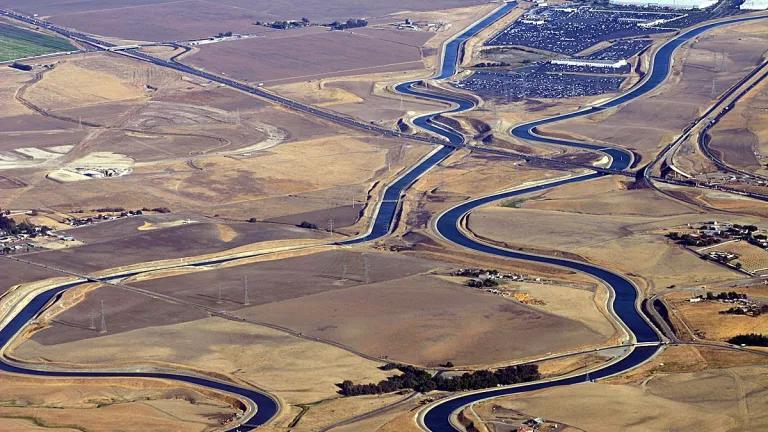The Federal Crop Insurance Program (FCIP) is the biggest taxpayer-funded support program for farmers; for many, the program works well, giving some peace of mind in a risky business or satisfying the requirements of ag creditors. For others, the program hampers innovation, creates an uneven playing field that drives monoculture practices with no built-in incentives for conservation, or is just not accessible (for example, many specialty crop growers or farmers using three- to six-year crop rotations might have trouble getting the insurance that works for their farm, in their region).
The last Farm Bill took some steps to address a couple of these problems. The 2014 Farm Bill created the Whole Farm Revenue Protection (WFRP) program, geared for diversified farming operations, and reconnected conservation compliance with crop insurance so that there is some minimum level of conservation required on vulnerable land and protection for wetlands. But there is room for improvement. When the new Farm Bill comes up in 2018, Congress has an opportunity to make a few changes that will allow climate-friendly farmers and diversified farms to compete, and take away some unnecessary provisions that may encourage, rather than mitigate, risk on farms. We’ve recommended some commonsense changes that Congress could make in 2018 in our new report, Covering Crops.
1. Get rid of cover crop termination guidelines
Known as the gateway practice for healthy soil, cover crops can build soil organic matter and make farms more resilient to weather-related losses over time. Unfortunately, the crop insurance program has been effectively operating as a barrier to cover crop farmers. USDA developed a set of rules for farmers who use cover crops. USDA worked carefully with subject matter experts to develop these guidelines, with the goal of protecting farmers from losing their crop insurance. The problem is, farmers don’t have to follow any set of complicated rules for other management decisions on their farms. By treating cover crops like a risky practice, USDA is ensuring that some farmers will stay away from cover crops. Instead, the FCIP could just defer to good farming practice, the same procedure that is used for all other management decisions.
2. Reform prevented planting rules
If weather keeps a farmer from planting crops, the farmer is in a prevented planting situation and may be eligible for a partial claim on insurance. We’ve recommended a couple of changes to prevented planting rules - like requiring cover crops to be planted instead of leaving the ground bare – that will set farmers up to be more successful in the long-term.
3. Collect data on the soil management-risk relationship
Healthy soil is a key component to climate-friendly farming, and should be part of a long-term strategy for managing farm risk. It takes hundreds of years to form an inch of soil, but it could wash away in one or two hard rains. That’s why we think a farmer’s soil management choices should be reflected in crop insurance policies. We need good data correlating soil management practices like cover cropping and reduced tillage with risk; if the data shows that healthy soil farms are costing less, then that should be reflected in the price of the insurance. But first we need the data. Congress could give the Risk Management Agency (RMA) that oversees crop insurance and other supportive USDA agencies like Natural Resources Conservation Service (NRCS) and Economic Research Service (ERS) the authority and resources needed to collect this data in the next Farm Bill.
4. Remove the yield exclusion option
Farmers are allowed to drop bad yield years from their insurance rates – kind of like dropping a bad test score from a class grade. Everyone has a bad year now and then. But the unfortunate consequence is that the true cost of insurance isn’t accounted for in premium rates, and we are missing an opportunity to encourage natural risk management, like good soil management. USDA surveys revealed that during the 2012 drought, cover-cropped fields had higher yields than the status quo. Healthy soil is better for farming in times of drought and flood. The FCIP should amend or remove yield exclusion to reward good performance.
5. Invest in Whole Farm Revenue Protection and Good Stewardship Incentives
Whole Farm insurance is based on the revenue of all commodities on a farm, rather than the yield of individual crops. The WFRP was a great innovation in the last Farm Bill, but the program is still new, it has some hiccups, and could use more investment going forward. As more farmers use the product, the program will need to adapt to be more user-friendly and less resource intensive. Congress could help the program by making sure enough resources are available to RMA to educate farmers and adaptively manage the program. Similarly, the Farm Bill offers a chance for new innovations, like pilot programs that offer good stewardship discounts to farmers who plant cover crops. RMA recently partnered with the Iowa Department of Agriculture and Land Stewardship to offer a higher subsidy on crop insurance premiums to Iowa cover crop farmers, lowering their out-of-pocket costs. This is a promising innovation; Congress could invest in a healthy soil future by ensuring RMA, NRCS, and other USDA agencies have the resources needed to pilot similar programs in other states.
As I heard one farmer-innovator put it, an ounce of prevention is worth a pound of cure. Healthy soil and risk management programs should go hand in hand.
To dig a little deeper, read Covering Crops here.




